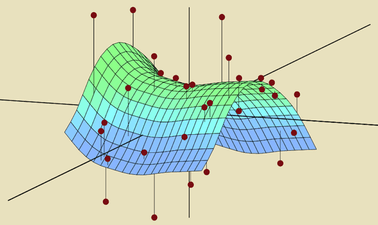
Moocable is learner-supported. When you buy through links on our site, we may earn an affiliate commission.
Description
Are you ready to start loving geometry? This course is here to guide you through some of the magic of geometry, revealing the thought processes that lead to clever solutions to beautiful geometry problems.
By the end of this course, you'll have explored polyominoes, tessellations, origami folding, art gallery problems, and lattice polygons.
Tags
Syllabus
- Introduction: Sample the beautiful side of geometry.
- Infinite Areas: How can you fit infinitely many shapes in a finite space?
- Polyomino Tiling: Get your first taste of beautiful geometry by exploring these tiling puzzles.
- Guards in the Gallery: Place guards so that they can see into every corner of these irregular polygons.
- Tessellations and Reptiles: M.C. Escher and beyond!
- Regular Tessellations: Explore tessellation patterns that use only one type of regular polygon.
- Semiregular Tessellations: What tessellations can you make when you use multiple types of shapes?
- Transforming Tiles Part 1: Morph regular shapes into bizarre shapes to create new kinds of tilings.
- Transforming Tiles Part 2: Extend your knowledge and skills with a second round of transformation puzzles.
- Irregular Tiles: Some very strange shapes can tile the plane, but the tessellations they make can be truly bizarre.
- Reptiles: Make larger copies from smaller copies.
- Infinite Arithmetic: Learn how geometric series can be summed up geometrically!
- Polyominos: Tile and cut shapes with geometrical intuition and logic.
- Tiling a Chessboard: In which of these cases can you entirely cover the chessboard with dominos?
- Counting All Possible Solutions: How many different ways do they fit?
- Bigger Polyomino Blocks: Take a step beyond dominoes and tackle these tetrominoes and pentominoes challenges!
- Challenging Packing Puzzles: Apply insight and creativity to pack these polyominos as tightly as possible.
- X-Only: What if you can only use the X-shaped pentomino?
- Tiling and Cutting: Investigate methods for finding out if a tiling is possible.
- Congruent Cutting: Cut shapes into several pieces that are identical.
- Folding Puzzles: The abstract mathematics of origami.
- Mathematical Origami: Unfold a paper crane and study the mountains and valleys that the folds reveal.
- Dragon Folding: To make a dragon fractal, you just have keep on folding, and folding, and folding...
- 1D Flat Folding: Explore the rules that govern how a single piece of paper can be folded flat.
- 2D Holes and Cuts: Fold, then cut, and then unfold again to make these designs.
- 2D Single-Vertex Flat Folding (I): Mathematically, how can you tell if something is flat foldable?
- 2D Single-Vertex Flat Folding (II): Extend your exploration of flat folding one final step further.
- Guarding Galleries: Irregular puzzles with irregular polygons.
- Strange Polygons: Get acquainted with the unusual polygons found in art gallery puzzles.
- Convex vs. Concave: Study the difference between convex and concave shapes and how they affect guard placement.
- Quadrilateral and Pentagonal Galleries: Look specifically at cases in which the galleries are quadrilaterals and pentagons.
- Efficient Guard Placement: Is there a systematic strategy for finding an ideal guard placement?
- Worst-Case Designs: Practice making galleries that are tough to guard.
- Fisk's Coloring Proof: Fisk's proof is puts an upper bound how many guards you might need for an n-sided gallery.
- Further Art Gallery Research: Investigate internal walls and other twists that you can add to the art gallery puzzle.
- Pick's Theorem: Derive a wondrous theorem involving areas on a grid.
- Pegboard Rectangles: Begin studying Pick's Theorem with an intuitive case.
- Pegboard Triangles: What happens when you cut pegboard rectangles in half?
- Pick's Theorem Generalized: Prove Pick's Theorem for any lattice polygon.
- Pick's Theorem with One Hole: Poke a hole in your polygons and see what formula comes out.
- Pick's Theorem with Multiple Holes: Extend Pick's Theorem one more time to address this multi-holed variation.

-
TypeOnline Courses
-
ProviderBrilliant
Are you ready to start loving geometry? This course is here to guide you through some of the magic of geometry, revealing the thought processes that lead to clever solutions to beautiful geometry problems.
By the end of this course, you'll have explored polyominoes, tessellations, origami folding, art gallery problems, and lattice polygons.
By the end of this course, you'll have explored polyominoes, tessellations, origami folding, art gallery problems, and lattice polygons.
- Introduction: Sample the beautiful side of geometry.
- Infinite Areas: How can you fit infinitely many shapes in a finite space?
- Polyomino Tiling: Get your first taste of beautiful geometry by exploring these tiling puzzles.
- Guards in the Gallery: Place guards so that they can see into every corner of these irregular polygons.
- Tessellations and Reptiles: M.C. Escher and beyond!
- Regular Tessellations: Explore tessellation patterns that use only one type of regular polygon.
- Semiregular Tessellations: What tessellations can you make when you use multiple types of shapes?
- Transforming Tiles Part 1: Morph regular shapes into bizarre shapes to create new kinds of tilings.
- Transforming Tiles Part 2: Extend your knowledge and skills with a second round of transformation puzzles.
- Irregular Tiles: Some very strange shapes can tile the plane, but the tessellations they make can be truly bizarre.
- Reptiles: Make larger copies from smaller copies.
- Infinite Arithmetic: Learn how geometric series can be summed up geometrically!
- Polyominos: Tile and cut shapes with geometrical intuition and logic.
- Tiling a Chessboard: In which of these cases can you entirely cover the chessboard with dominos?
- Counting All Possible Solutions: How many different ways do they fit?
- Bigger Polyomino Blocks: Take a step beyond dominoes and tackle these tetrominoes and pentominoes challenges!
- Challenging Packing Puzzles: Apply insight and creativity to pack these polyominos as tightly as possible.
- X-Only: What if you can only use the X-shaped pentomino?
- Tiling and Cutting: Investigate methods for finding out if a tiling is possible.
- Congruent Cutting: Cut shapes into several pieces that are identical.
- Folding Puzzles: The abstract mathematics of origami.
- Mathematical Origami: Unfold a paper crane and study the mountains and valleys that the folds reveal.
- Dragon Folding: To make a dragon fractal, you just have keep on folding, and folding, and folding...
- 1D Flat Folding: Explore the rules that govern how a single piece of paper can be folded flat.
- 2D Holes and Cuts: Fold, then cut, and then unfold again to make these designs.
- 2D Single-Vertex Flat Folding (I): Mathematically, how can you tell if something is flat foldable?
- 2D Single-Vertex Flat Folding (II): Extend your exploration of flat folding one final step further.
- Guarding Galleries: Irregular puzzles with irregular polygons.
- Strange Polygons: Get acquainted with the unusual polygons found in art gallery puzzles.
- Convex vs. Concave: Study the difference between convex and concave shapes and how they affect guard placement.
- Quadrilateral and Pentagonal Galleries: Look specifically at cases in which the galleries are quadrilaterals and pentagons.
- Efficient Guard Placement: Is there a systematic strategy for finding an ideal guard placement?
- Worst-Case Designs: Practice making galleries that are tough to guard.
- Fisk's Coloring Proof: Fisk's proof is puts an upper bound how many guards you might need for an n-sided gallery.
- Further Art Gallery Research: Investigate internal walls and other twists that you can add to the art gallery puzzle.
- Pick's Theorem: Derive a wondrous theorem involving areas on a grid.
- Pegboard Rectangles: Begin studying Pick's Theorem with an intuitive case.
- Pegboard Triangles: What happens when you cut pegboard rectangles in half?
- Pick's Theorem Generalized: Prove Pick's Theorem for any lattice polygon.
- Pick's Theorem with One Hole: Poke a hole in your polygons and see what formula comes out.
- Pick's Theorem with Multiple Holes: Extend Pick's Theorem one more time to address this multi-holed variation.
Tags
Related Courses


Quot erat demonstrandum. Curso cero de Matemáticas

Postgraduate study skills in science, technology or mathematics

Statistical Learning with R

STAT 507: Epidemiological Research Methods

Mathematical Methods And Its Applications

Math for Machine Learning (Vietnamese)

Differential Equations II

Praxis Fundamental Subjects: Content Knowledge (5511) Prep

GACE Early Childhood Education (501) Prep

5th Grade Math

CAHSEE Math Exam: Tutoring Solution
Loading...
Saving...
Loading...

 Online Courses
Online Courses  Brilliant
Brilliant
